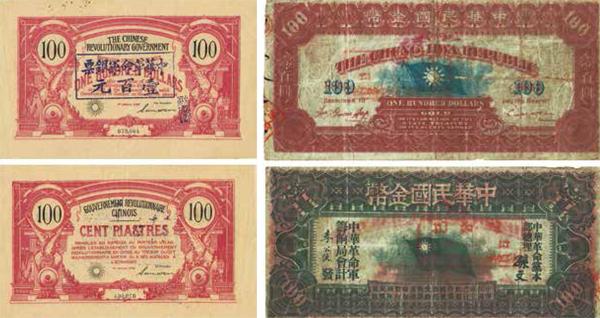Sun Yat-sen Numismatic Museum, Hangzhou
Tian Lu
Housing a rare collection of coins related to the era of Sun Yat-sen, the Sun Yat-sen Numismatic Museum in Hangzhou is the countrys first and only one of its kind. The museum itself is housed in a Republican-style mansion tucked away in an alley off Kaixuan Road, near the Chengdong Park off the Tiesha River in Hangzhou. The museums proximity to the now defunct Genshanmen Train Station serves as a reminder that it is the place where Dr. Sun and Soong Ching-ling got off the train to visit the tomb of revolutionary, feminist, and writer Qiu Jin (1875-1907), who was executed after a failed uprising against the Qing dynasty, at the age of 32.

杭州孫中山钱币纪念馆展示藏品。Exhibits in the collection of Sun Yat-sen Numismatic Museum in Hangzhou
The first effort to set up a museum to house various coins and banknotes of the Republic years began at the end of August in 2017. The museum opened its door to the public on November 12, 2018, in commemoration of the 152nd anniversary of the birth of Dr. Sun Yat-sen.
The collection of the museum, small-sized but fully equipped, was enriched by exhibits acquired through excavations, purchases and donations. More than 90% of the 400 coins and banknotes issued in Sun Yat-sens era have been proved to be associated with the revolutionary activities of Sun.
The collection is arranged in such a way so as to follow the history of coinage in Suns times, therefore offering an intriguing perspective for people today to better understand the revolutionary life of Sun Yat-sen. Although Sun is considered to be one of the greatest leaders of modern China, his political life was one of constant struggle and frequent exile. Encapsulated in the 100-yuan “revolutionary bill”, ordered by Sun Yat-sen to be made in Paris and issued after the founding of Tongmenghui (United League) in order to raise funds for the uprisings in Chaozhou, Meizhou and Zhennanguan, is the lesser-known hardship Sun endured in the early years of his revolutionary career. After a total of four uprisings failed in 1907 and two more failed the next year, Suns leadership was challenged. In July 1910, the Tongmenghui headquarters had to relocate from Singapore to Penang to reduce the anti-Sun activities. He also had to transfer all the issued bonds into his villa (known as Wan Qing Yuan) in Singapore, where the Singapore chapter of the Tongmenghui was established on 6 April 1906 to serve as the organizations headquarters. When the situation got worse, Sun had to throw all the bonds into the fire.
Suns notability and popularity extended beyond the Greater China region, to North America, where he received direct support from a large concentration of overseas Chinese residing in San Francisco. The bonds he issued in July 1911 brought back 144,130 USD within only three months, providing invaluable help for the success of the Wuchang Uprising in 1911.
The museums collection also contains several “super-big” banknotes issued by Xinjiang Province Bank. The denominations range from 30 million yuan all the way up to six billion yuan. However, at the time when the whole country was suffering from the most outrageous inflation, a 6-billion-yuan note could hardly bring back a bowl of rice.
Entering the museum, visitors are welcomed by a bust of Dr. Sun. The bust was donated by his granddaughter, Hawaii-based Sun Huifang, Chair of the Sun Yat-sen Foundation in America, and was unveiled by 83-year-old Sun Huifang in Hangzhou on August 27, 2018. It is one of the 241 San Yat-sen busts she donated in 13 countries in order to promote the legacy of Dr. Sun. The Zijingang Campus of the Hangzhou-based Zhejiang University also houses one of the busts.
During her revisit to Hangzhou in November of 2018, Sun Huifang also visited Yanguan, where the magnificent tidal spectacle brought her back to the day her grandfather and Soong Ching-ling admired the awe-inspiring tidal wonder of the Qiantang River at the Haitao Pavilion.
The museums collection also contains part of the private collection of Gu Ming, director of the Hangzhou Museum.

